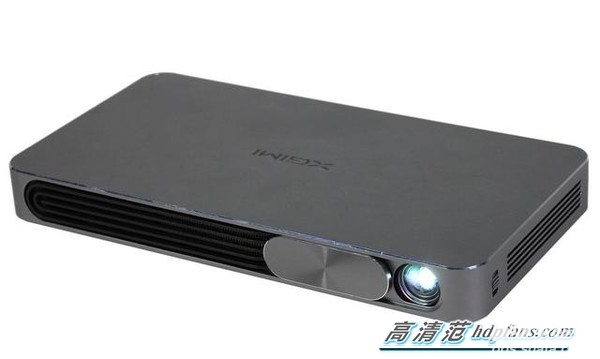With the development of the Internet science and technology, people have also developed the habit of information readily available. The demand for smart digital products is also increasing. The most important thing is to reflect professionalism. The bigger the screen, the better. The higher the picture quality, the better. But everything needs a degree. In recent years, smart micro-investment has become the new darling of smart home products. Extreme smart meters, nuts, cool music, gods paintings and Other intelligent projection manufacturers, many projection products dazzling, how to choose smart projection becomes the problem facing consumers now. However, you only need to grasp the following points to easily choose your own smart projection.
We will explain the 12 aspects of the problem. We will explain here as a series of six key points.

First, the resolution
The resolution of a smart projector refers to the physical resolution of the projector's core light engine. In other words, the projection screen is composed of numerous pixel bright spots. The more points, the higher the resolution, the clearer the picture. You will see more clearly. Our common resolution is:
SVGA: 800x600 economical smart projector common resolution;
XGA: 1024x768 resolution for mainstream business and educational projectors;
SXGA+: 1400x1050 resolution for high-end smart projectors for high-end professional applications such as imaging;
480p: 852x480 resolution for low-end home smart projectors;
720p: 1280x720 or 1280x768 mid-range home smart projector resolution;
1080p: 1920x1080 or 1920x1200 resolution for high-end home smart projectors.

Second, the service life
The most important part of a smart projector is its light bulb, which is also the most expensive accessory and consumable item for a smart projector. The quality of the light bulb has a very important influence on the useful life of the smart projector. Most smart projectors use LED projection technology. Compared with traditional projectors, the biggest advantage of smart projectors with LED light sources is that there is no need to replace the light bulb, and the service life of the light bulb is between 10,000 and 20,000 hours. It is also sufficient for general family use.

Third, the projection ratio
The farther the smart projector projects the distance, the larger the screen size will be. Due to the difference in each smart projection product, there is a gap in projected images, which is associated with the ability to intelligently project the picture size. In addition to ordinary smart projector lenses, it is also divided into short focal length and telephoto lenses. However, their cost is different. For different usage environments, how do you choose the projection ratio? This is the most important reference factor for smart projection selection. Projection ratio = projection distance / screen width, the smaller the ratio, indicating the same projection distance, the greater the width of the projection screen. Ordinary smart projector projection ratio is generally between 1.5-1.9. Since many smart projectors are homes, and the living room space is not very large, therefore, the projection ratio should not be chosen too much, otherwise you will not agree to experience the fun of a big screen.

Fourth, brightness
The light output of the smart projector refers to the brightness of the projector. Generally speaking, the luminous flux is used as a standard. The luminous flux refers to the energy emitted from the light source to the surrounding space in a unit time to generate energy for the human eye, and the unit is lumens. For the current smart projection market, the brightness of mainstream home projectors is generally between 300-500 ANSI lumens. From the current experience, the brightness of smart projectors at 1000 ANSI lumens can also be more difficult to use during the day. Here's a simple comparison.
Below 100 lumens, it is recommended that the maximum projection 50-60 inches, evening, 20 inches or so, during the day;
About 250 lumens, it is recommended that the maximum projection about 80 inches, at night, about 40 inches, during the day;
About 500 lumens, it is recommended that the maximum projection 120-150 inches, at night, about 60 inches, during the day;
1000 lumens or so... It looks like micro-casting is not that high...
On sunny days, we come to Zhang Meitu.
 Fifth, the contrast
Fifth, the contrast
The black-and-white ratio projected on the screen of the smart projector is a gradient from black to white. The larger the contrast ratio, the more gradient levels from black to white, and the more detailed the picture will be.

6. Maximum screen size The maximum screen size of a smart projector refers to the size of the screen diagonal. Many mainstream smart projectors can deliver 100-inch or larger screens. In fact, if the manufacturers’ propaganda is so large, if they are really so great, the quality may not be so good, and the effect will not be ideal. The mainstream projection screen in the smart projector market is about 300 inches, and the best projection screen has the best picture quality, generally one-half or one-third of the maximum projection screen.

We will explain the 12 aspects of the problem. We will explain here as a series of six key points.

The resolution of a smart projector refers to the physical resolution of the projector's core light engine. In other words, the projection screen is composed of numerous pixel bright spots. The more points, the higher the resolution, the clearer the picture. You will see more clearly. Our common resolution is:
SVGA: 800x600 economical smart projector common resolution;
XGA: 1024x768 resolution for mainstream business and educational projectors;
SXGA+: 1400x1050 resolution for high-end smart projectors for high-end professional applications such as imaging;
480p: 852x480 resolution for low-end home smart projectors;
720p: 1280x720 or 1280x768 mid-range home smart projector resolution;
1080p: 1920x1080 or 1920x1200 resolution for high-end home smart projectors.

Second, the service life
The most important part of a smart projector is its light bulb, which is also the most expensive accessory and consumable item for a smart projector. The quality of the light bulb has a very important influence on the useful life of the smart projector. Most smart projectors use LED projection technology. Compared with traditional projectors, the biggest advantage of smart projectors with LED light sources is that there is no need to replace the light bulb, and the service life of the light bulb is between 10,000 and 20,000 hours. It is also sufficient for general family use.

Third, the projection ratio
The farther the smart projector projects the distance, the larger the screen size will be. Due to the difference in each smart projection product, there is a gap in projected images, which is associated with the ability to intelligently project the picture size. In addition to ordinary smart projector lenses, it is also divided into short focal length and telephoto lenses. However, their cost is different. For different usage environments, how do you choose the projection ratio? This is the most important reference factor for smart projection selection. Projection ratio = projection distance / screen width, the smaller the ratio, indicating the same projection distance, the greater the width of the projection screen. Ordinary smart projector projection ratio is generally between 1.5-1.9. Since many smart projectors are homes, and the living room space is not very large, therefore, the projection ratio should not be chosen too much, otherwise you will not agree to experience the fun of a big screen.

The light output of the smart projector refers to the brightness of the projector. Generally speaking, the luminous flux is used as a standard. The luminous flux refers to the energy emitted from the light source to the surrounding space in a unit time to generate energy for the human eye, and the unit is lumens. For the current smart projection market, the brightness of mainstream home projectors is generally between 300-500 ANSI lumens. From the current experience, the brightness of smart projectors at 1000 ANSI lumens can also be more difficult to use during the day. Here's a simple comparison.
Below 100 lumens, it is recommended that the maximum projection 50-60 inches, evening, 20 inches or so, during the day;
About 250 lumens, it is recommended that the maximum projection about 80 inches, at night, about 40 inches, during the day;
About 500 lumens, it is recommended that the maximum projection 120-150 inches, at night, about 60 inches, during the day;
1000 lumens or so... It looks like micro-casting is not that high...
On sunny days, we come to Zhang Meitu.

The black-and-white ratio projected on the screen of the smart projector is a gradient from black to white. The larger the contrast ratio, the more gradient levels from black to white, and the more detailed the picture will be.

6. Maximum screen size The maximum screen size of a smart projector refers to the size of the screen diagonal. Many mainstream smart projectors can deliver 100-inch or larger screens. In fact, if the manufacturers’ propaganda is so large, if they are really so great, the quality may not be so good, and the effect will not be ideal. The mainstream projection screen in the smart projector market is about 300 inches, and the best projection screen has the best picture quality, generally one-half or one-third of the maximum projection screen.

BLG Digital Network Co., Ltd. , http://www.gdnetworkcable.com